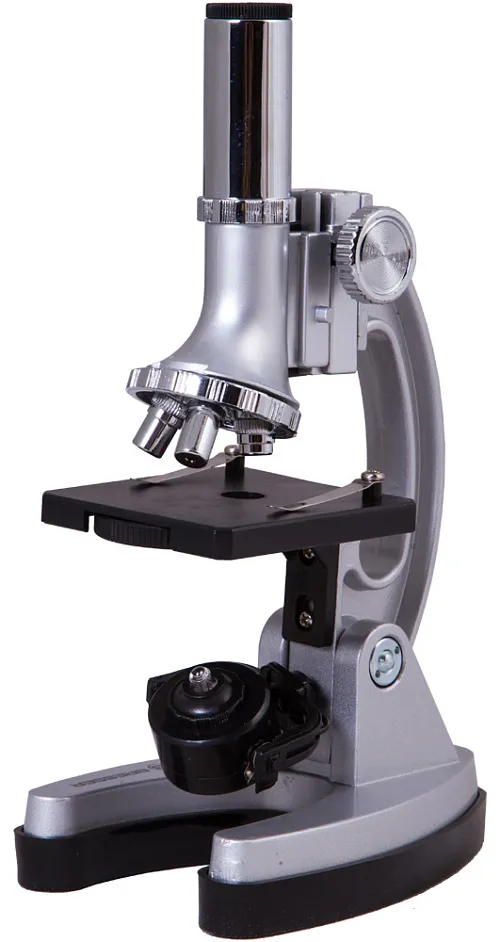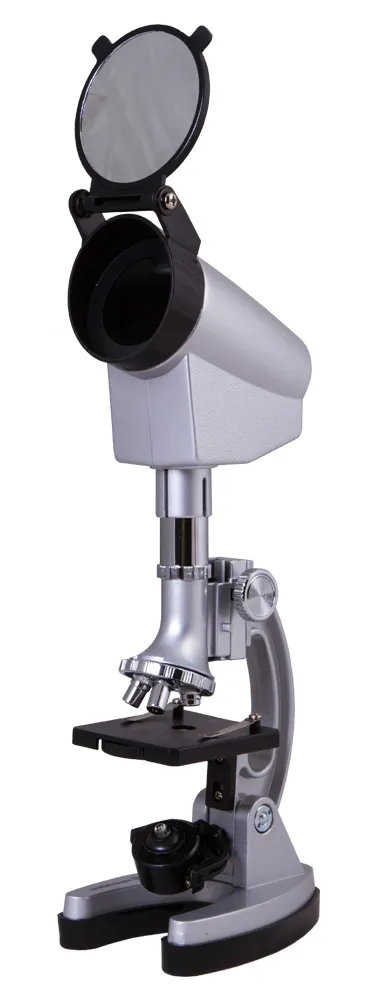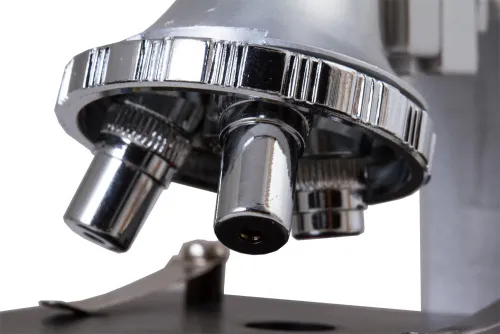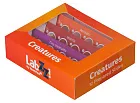Bresser Junior Biotar 300–1200x Microscope, with case
Microscope for beginners. Magnification: 300–1200x. Case for transportation included
| Product ID | 70125 |
| Brand | Bresser GmbH, Germany |
| Warranty | 2 years |
| EAN | 4007922152608 |
| Package size (LxWxH) | 35x35x11 cm |
| Shipping Weight | 2.34 kg |
Bresser Junior Biotar 300–1200x Microscope allows for a quick entry into the world of microscopy due to the included extensive set of tools and samples. The magnification ranges from 300x to 1200x, which makes it possible to study even bacteria. The microscope is equipped with three lenses of different strengths (7. 5x, 15x, and 30x) and a powerful 40x eyepiece, and is suitable for studying transparent samples using the bright field method in transmitted light. A mirror and a halogen lamp give you a good choice of studying samples in any lighting conditions. The illumination works on batteries (not included). The kit and microscope are delivered in a very convenient, sturdy carrying case. All this makes the microscope ideal for a beginner.
Features:
- Microscope for beginners
- Experiment kit included
- Observation in the transmitted light
- Magnification from 300x to 1200x
- Battery power supply
- Case for storage and transportation included
The kit includes:
- Bresser Junior Biotar 300–1200x Microscope
- 5 prepared slides
- 5 blank slides
- 10 cover slips
- Dropper
- Forceps
- Scissors
- 2 dissecting needles
- Flask with yeast
- Flask with sea salt
- Flask with pitch
- Flask with brine shrimp
- Case
- User manual
| Product ID | 70125 |
| Brand | Bresser GmbH, Germany |
| Warranty | 2 years |
| EAN | 4007922152608 |
| Package size (LxWxH) | 35x35x11 cm |
| Shipping Weight | 2.34 kg |
| Type | biological, light/optical |
| Microscope head type | monocular |
| Magnification, x | 300 — 1200 |
| Eyepieces | 40x |
| Objectives | 7.5x, 15x, 30x |
| Revolving nosepiece | for 3 objectives |
| Stage features | with clips |
| Diaphragm | diaphragm disc |
| Focus | coarse |
| Illumination | mirror, halogen |
| Power supply: batteries/built-in battery | 2 AA batteries (not included) |
| Additional | smartphone holder |
| User level | beginners, elementary |
| Application | elementary, school/educational |
| Illumination location | lower |
| Research method | bright field |
| Experiment kit included | ✓ |
| Pouch/case/bag in set | case |
We have gathered answers to the most frequently asked questions to help you sort things out
Find out why studying eyes under a microscope is entertaining; how insects’ and arachnids’ eyes differ and what the best way is to observe such an interesting specimen
Read this review to learn how to observe human hair, what different hair looks like under a microscope and what magnification is required for observations
Learn what a numerical aperture is and how to choose a suitable objective lens for your microscope here
Learn what a spider looks like under microscope, when the best time is to take photos of it, how to study it properly at magnification and more interesting facts about observing insects and arachnids
This review for beginner explorers of the micro world introduces you to the optical, illuminating and mechanical parts of a microscope and their functions
Short article about Paramecium caudatum - a microorganism that is interesting to observe through any microscope
















